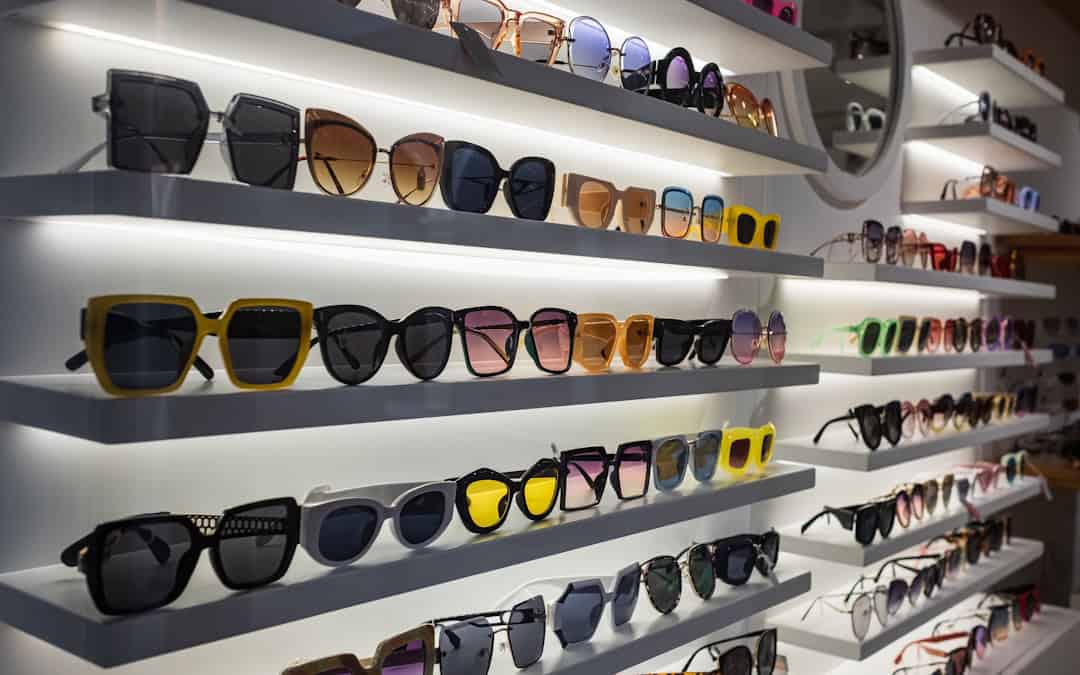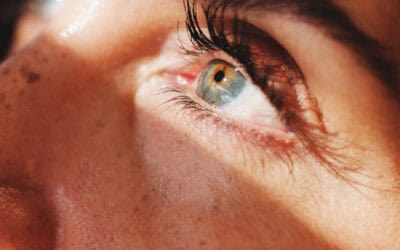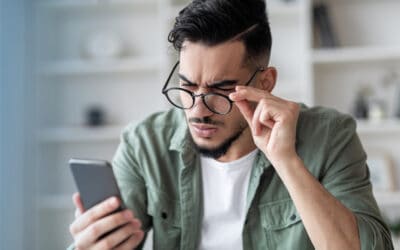The importance of eye protection goes far beyond simply wearing a pair of sunglasses. From shielding the eyes from ultraviolet (UV) radiation to preventing damage from eye injuries in the workplace or during recreational activities, we must take the necessary steps to maintain overall eye health and prevent vision loss.
This article provides comprehensive information about the impact UV radiation has on your eyes, as well as the most effective protection strategies and tips for preventing eye injuries at work and popular recreational activities.
Understanding UV Radiation: The Invisible Threat
UV radiation poses a significant threat to eye health. Overexposure to UV radiation can potentially cause conditions ranging from photokeratitis (corneal sunburn) to cataracts and macular degeneration.
There are three types of UV rays:
- Ultraviolet A (UVA): Penetrates deep into the eye, causing long-term damage
- Ultraviolet B (UVB): Primary cause of immediate eye surface damage
- Ultraviolet C (UVC): Completely absorbed by the ozone layer and atmosphere
A multi-faceted approach is essential for preserving long-term vision health, including selecting appropriate sunglasses that help block these damaging UV rays.
Selection Criteria for Sunglasses with UV Protection
In this section we list some important features for you to consider when shopping for sunglasses.
UV Protection Rating Criteria
- 100% UV Protection: Look specifically for labels stating “100% UV protection”, “UV400”, or “Blocks 99-100% of UVA and UVB rays”.
- Optical quality certification: Sunglasses that meet ANSI Z80.3 standards (American National Standards Institute) are designed to quality standards for not only UV protection but also the durability of the frame and lenses.
- CE marking: In Europe, this indicates compliance with health, safety and environmental protection standards.
Frame Design & Eye Coverage Considerations
- Wraparound styles: Frames that are curved to “wrap-around” your face next to your eyes will help prevent UV rays from entering from the sides.
- Close-fitting frames: When fitting new sunglasses, look for frames that minimize gaps between the frame and face to further restrict UV rays.
- Wide temples: Frames with a wide temple design will provide additional UV protection beyond the sides of the lenses.
- Size considerations: Larger lenses generally provide better coverage since they extend beyond the immediate eye vision area.
Lens Type & Color Considerations
- Polarized lenses: This type of lens will reduce glare from reflective surfaces like water, snow, and roads to give you improved visual clarity and reduce eye strain on bright days. A great option not only for daily driving but also skiing and water recreation.
- Photochromic lenses: These are lenses that automatically darken in bright conditions so that you can wear the same eyeglasses indoors and outdoors. One thing to be aware of is that they may not fully darken in hot weather or inside vehicles, lessening their effectiveness.
- Mirror-coated lenses: This type of lens reflects light away from the eyes which is very useful if you are frequently in extremely bright conditions such as snow & water recreation.
- Gradient lenses: This special lens is designed to be darker at the top and lighter at the bottom, which provides balanced protection for varying light conditions while driving.
- Lens color and tint: Manufacturers may also offer different colors and tints with their lenses. Our opticians can help you try out and choose between the available options. Some typical choices include brown/amber (enhances contrast and depth perception), gray (minimizes color distortion while maximizing brightness reduction), and yellow/orange (enhanced visibility in low-light conditions).
We know it can be overwhelming to look over the many options for UV protective eyewear. Remember that we’re here to help! The opticians at The Optical Shop at Chang Eye Group are trained to help you find and fit the most appropriate lenses and frames for your unique lifestyle. Call or stop by one of our eye care locations in Pittsburgh to meet with our friendly team.
Workplace and Activity-Specific Eye Protection
People who work in environments with potential eye hazards must understand not only when to use eye protection but also the proper type to wear. In this section we explore the specific eye protection needed for workers in construction, medical and other industries.
Eye Protection for Construction Workers
Proper eye protection is essential for construction workers to safely perform their jobs. There are a variety of tasks on most construction sites that carry inherent risks, and everyone must adhere to protection protocols.
Some of the main causes of eye injuries faced by construction workers include:
- Particles in the eye: Particles are present on all construction sites that can be damaging if they enter the eye. Materials such as wood, bricks, cement, and metals can all release particles that can land in the eye through the air or by rubbing your face.
- Chemical splashes: Solvents, paints, and chemical solutions can splash, with the potential of causing serious eye damage.
- Burns: Burns in construction can be caused by torches or intense light sources, especially during nighttime work.
- Blows to the eye: Operating or working near heavy machinery increases the potential for falling objects and the risks of blows to the eye.
Construction workers should never perform their job tasks without wearing proper eye protection.
Common protective eyewear for construction workers includes safety goggles with a universal frame consisting of lenses, frame and a securing mechanism. These types of safety goggles provide protection and are suitable for tasks with a low risk of eye injury.
Another type of protective eyewear for construction workers are safety glasses with integral frames. These are also known as panoramic safety glasses. They surround the eye area and offer maximum eye protection. This type of protective eyewear is best for workers performing high-risk tasks.
Eye Protection for Workers in Lab and Medical Settings
Proper eye protection is essential for people working in laboratories or medical offices.
Safety glasses with side shields are common for moderate impact and chemical splashes, while goggles offer coverage for chemical hazards, dust, and similar risks. Face shields should always be worn to provide full-face protection in high-risk environments.
The most common types of eye protection for workers in lab and medical settings include:
- Safety Glasses: Safety glasses offer protection from moderate impact hazards and minor chemical and biological splashes and are also important for protection from debris. They should always be well-designed, lightweight, and comfortable, with soft rubber nosepieces and adjustable temples for a good fit.
- Safety Goggles: This type of eyewear provides a higher level of protection, with a seal around the eyes for better coverage against liquids, chemicals, and fine particles. Safety goggles are most common in laboratories, chemical plants, industrial manufacturing facilities, and healthcare settings. They can be designed as vented or non-vented, with non-vented goggles providing protection against vapors, mists, and fumes.
- Face Shields: Face shields provide full-face protection, covering the eyes, nose, and mouth.
Specialized Protective Eyewear for Specific Professions
Specialized protective eyewear is also available for specific professions. Thousands of workers sustain job-related eye injuries each day, and the majority of these could be prevented with proper eye protection.
Two of the most common reasons for eye injuries within the workplace are when a worker is either wearing the wrong type of eye protection or wearing no type of eye protection at all.
Here are some of the most common professions that require specialized protective eyewear:
- Auto repair
- Carpentry
- Electrical work
- Maintenance
- Manufacturing
- Mining
- Plumbing
- Welding
OSHA Guidelines for Protective Eyewear
The Occupational Safety and Health Administration, more commonly known as OSHA, has key guidelines and requirements to ensure that eye protection is adequate. The standards and requirements have been developed based on these two main components:
- Hazard Assessment: A hazard assessment must always be conducted to determine which type of eye or face protection is necessary. The type of work being performed, the potential hazards and the likelihood of exposure should always be considered.
- Eye and Face Protection: Eye and face protection must be provided to employees who are exposed to hazards that can cause eye or face injuries. It must be appropriate for the hazards and properly fit each person.
ANSI Z87.1-2020 Standards
All eye and face protection must meet the American National Standards Institute (ANSI) Z87.1-2020 standards, which outline performance criteria for eyewear. This includes impact resistance, lens thickness, and optical quality.
Maintenance and Replacement
Eye and face protection must be maintained in a clean and sanitary condition and replaced as necessary. All employees must be trained on the use and care of eye protection.
Emergency Eye and Face Wash Stations
Emergency eye and face wash stations must be available for workers who are exposed to hazardous materials that can cause eye injuries. The stations must be accessible and within 10 seconds of travel time from the hazard.
Sports and Recreational Eye Protection
Using proper eye protection is also important for outdoor sports and recreation enthusiasts. Activities such as cycling, skiing, swimming, hunting, or even enjoying a ball game can put anyone at risk for an eye emergency, so remember to make safety a priority.
Sports have various lighting conditions and unique environmental challenges. Specialized sports eyewear can address all of these factors, and offer features including:
- Wraparound designs that keep out wind and debris
- Shatterproof materials
- Anti-slip technologies
- Tints and coatings tailored to the demands of the sport, such as UV protection and anti-fog properties
Always keep in mind that safety glasses are not just for high-risk activities. Any task that has the potential for eye injury requires appropriate protection and can happen at work or home. Activities such as yard work and home improvement projects can all pose a risk.
Environmental Eye Protection Considerations for Different Environments
Different environments present various risks of eye injury.
Indoor workplace or recreation environments have the potential for dust that can become lodged in the eye or sharp objects that can penetrate the eye.
Spending time outdoors can pose the risk of prolonged exposure to ultraviolet (UV) radiation that can lead to conditions like cataracts and macular degeneration. Blowing wind and dust can lead to dryness and irritation, and airborne allergens can trigger reactions in the eyes.
In certain environments, such as deserts, always be sure to wear high wind or sand goggles with foam seals. These are especially necessary for activities like motorcycling or skydiving.
When spending time in high altitudes, be sure to wear goggles, as they offer broader protection.
Finally, in urban environments, wraparound glasses are excellent at protecting against airborne irritants like dust and direct wind that can settle on the surface of the eyes.
Digital eye protection is important for anyone that uses mobile phones or computer throughout the day. Many people spend hours in front of computers and looking at phones, and increased screen time can be detrimental to the eyes. Often it can cause digital eye strain, and the blue light emitted from devices disrupts sleep patterns.
Always be sure to use specialized screen protectors, which reduce glare and filter out blue light. Or, consider blue light glasses have lenses that block or filter out the blue light given off from digital screens, which go a long way in reducing damage to the retina.
Comprehensive protection is important for the health of your eyes. Always wear sunglasses with UV protection and use protective eyewear when necessary.
Keep in mind that regular eye exams are important to be aware of any changes to your eye health & vision. If you are in the Pittsburgh area, schedule a visit to Chang Eye Group today. We look forward to helping you maintain the health of your eyes.






